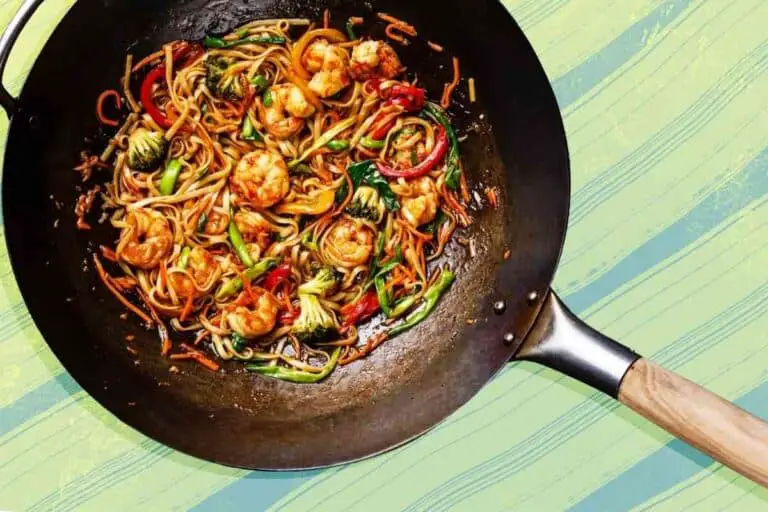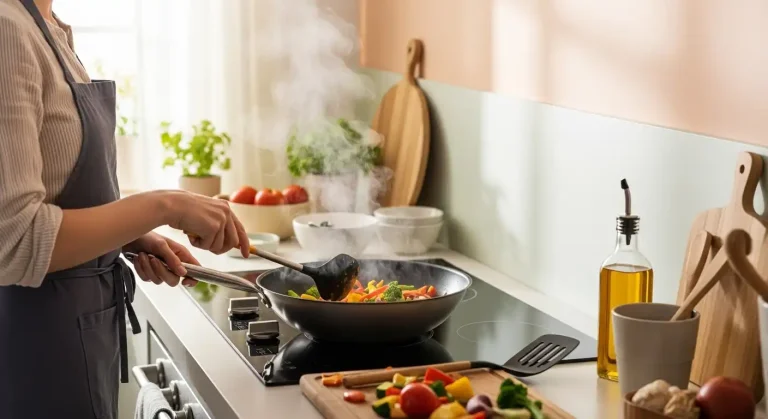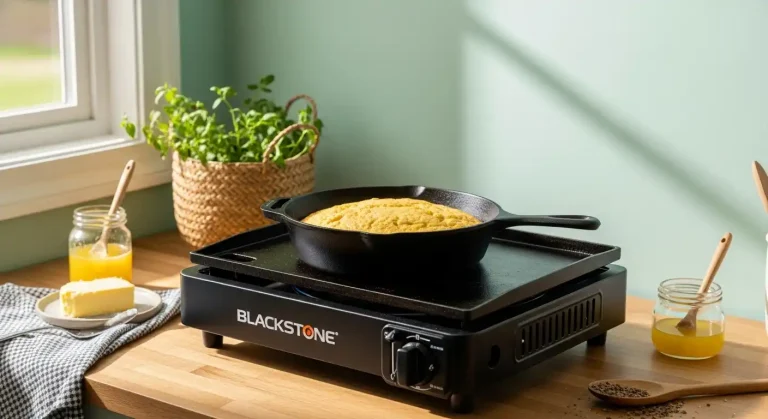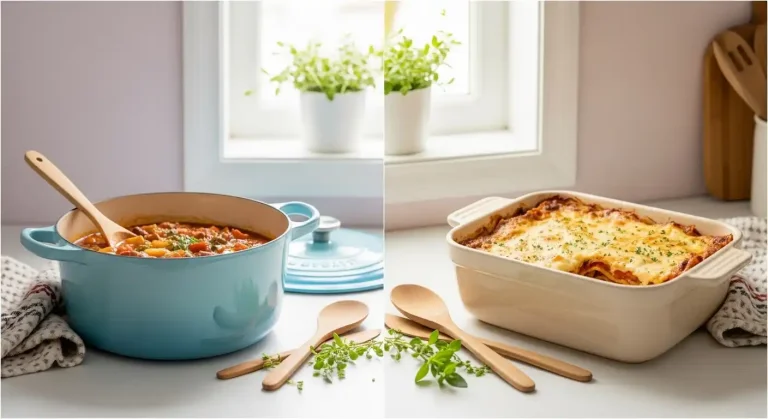Wok vs Stir Fry Pan: Which One Should You Choose for Your Kitchen?
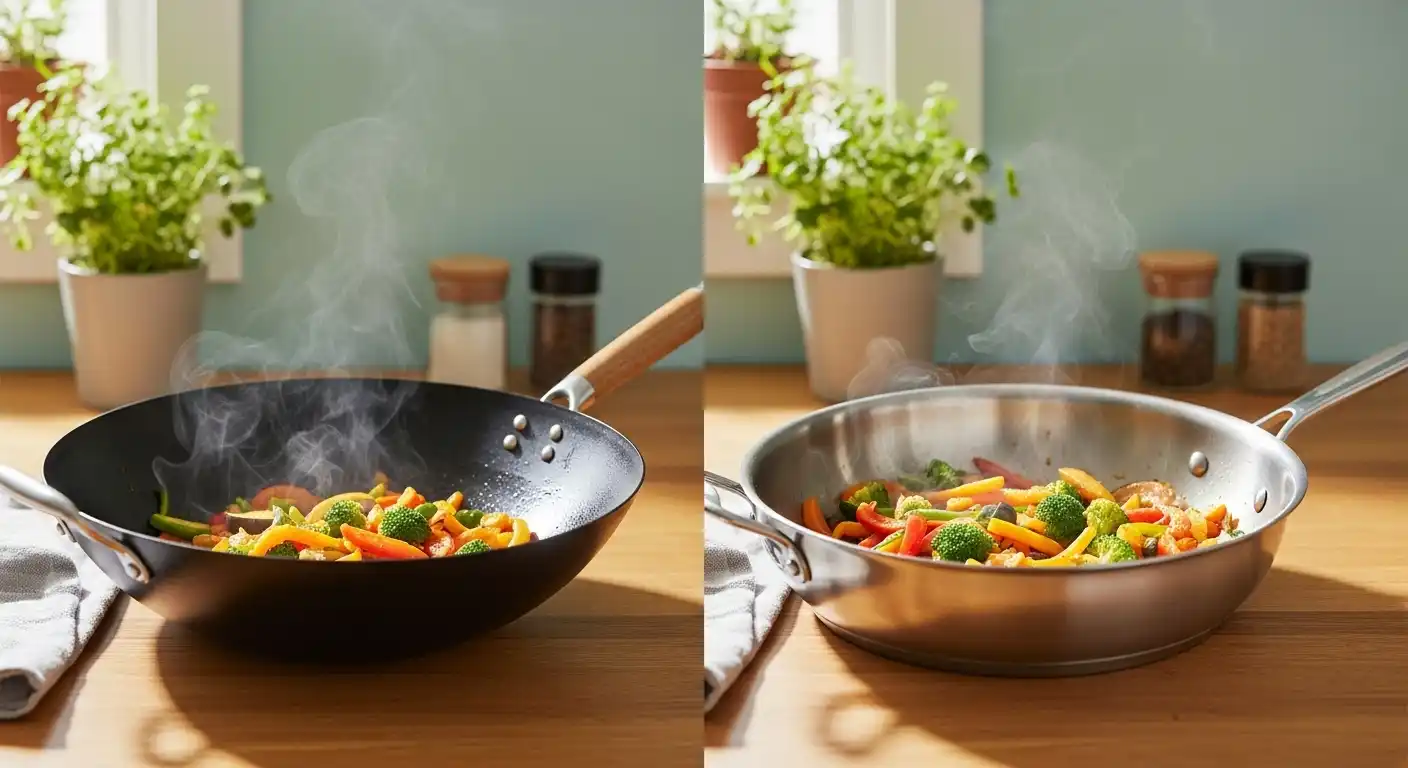
If you’re passionate about cooking or just starting your culinary journey, you’ve probably come across the debate: Wok vs Stir Fry Pan.
Both tools are kitchen staples, especially for lovers of Asian cuisine.
But what exactly sets them apart, and which one is right for your cooking style?
Let’s dive deep into their differences, similarities, and when you should use one over the other.
🎄 Christmas & Year-End Amazon Deals !
Don’t miss out on the best discounts and top-rated products available right now!
*As an Amazon Associate, I earn from qualifying purchases.
What is a Wok?
The wok is a traditional Chinese cooking vessel, instantly recognizable by its deep, rounded sides and wide top.
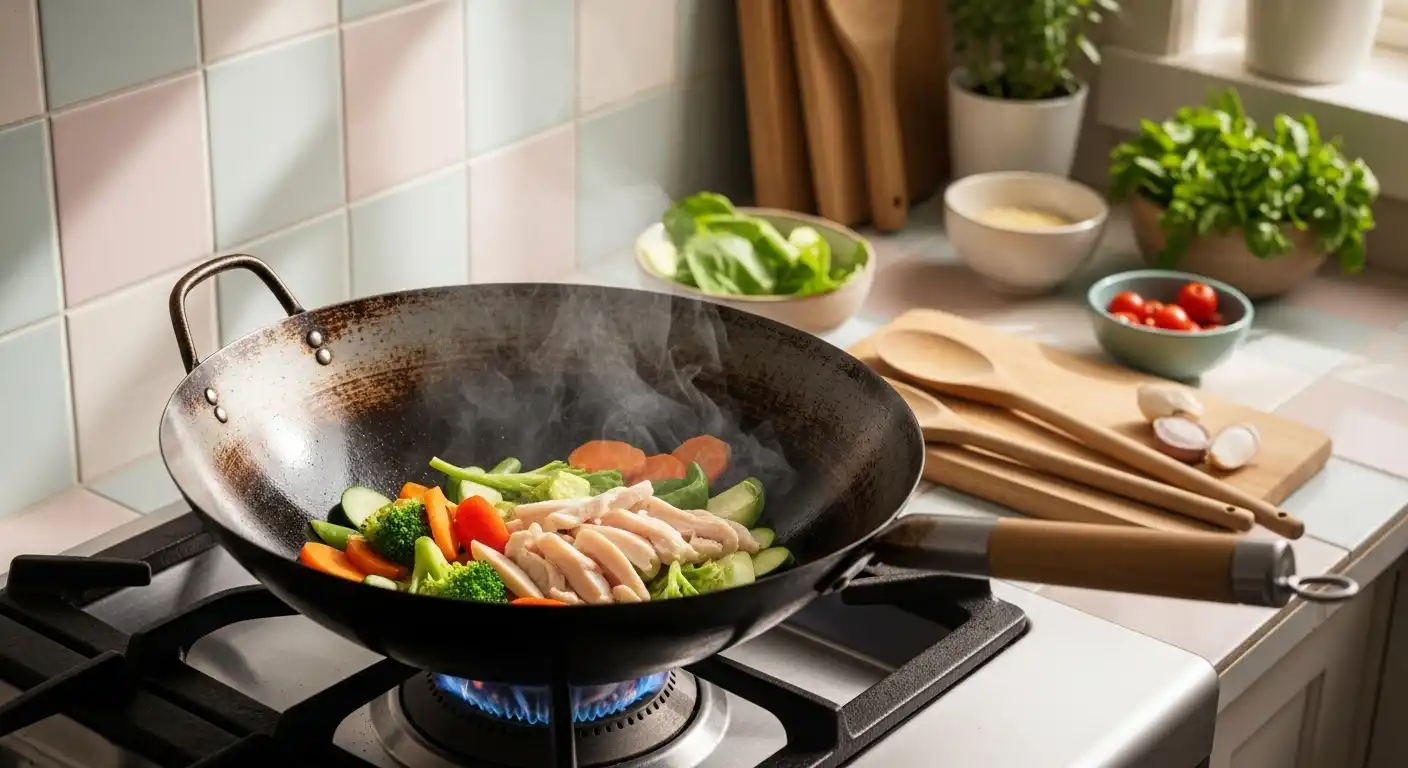
Originally crafted for open flame cooking, it has evolved into a versatile kitchen tool found in homes worldwide.
Key Features of a Wok:
- High, sloping sides for easy stirring and tossing.
- A round or flat bottom to suit different stove types. (Learn more about choosing the right size wok for your needs.)
- Materials like carbon steel, cast iron, or stainless steel.
- Ideal for high-heat, quick-cooking techniques like stir-frying, searing, and deep-frying.
If you’re wondering about seasoning and maintenance, check out our guide on how to season a carbon steel wok.
What is a Stir Fry Pan?
A stir fry pan, often referred to as a hybrid between a wok and a frying pan, features moderately sloped sides and a flat cooking surface.
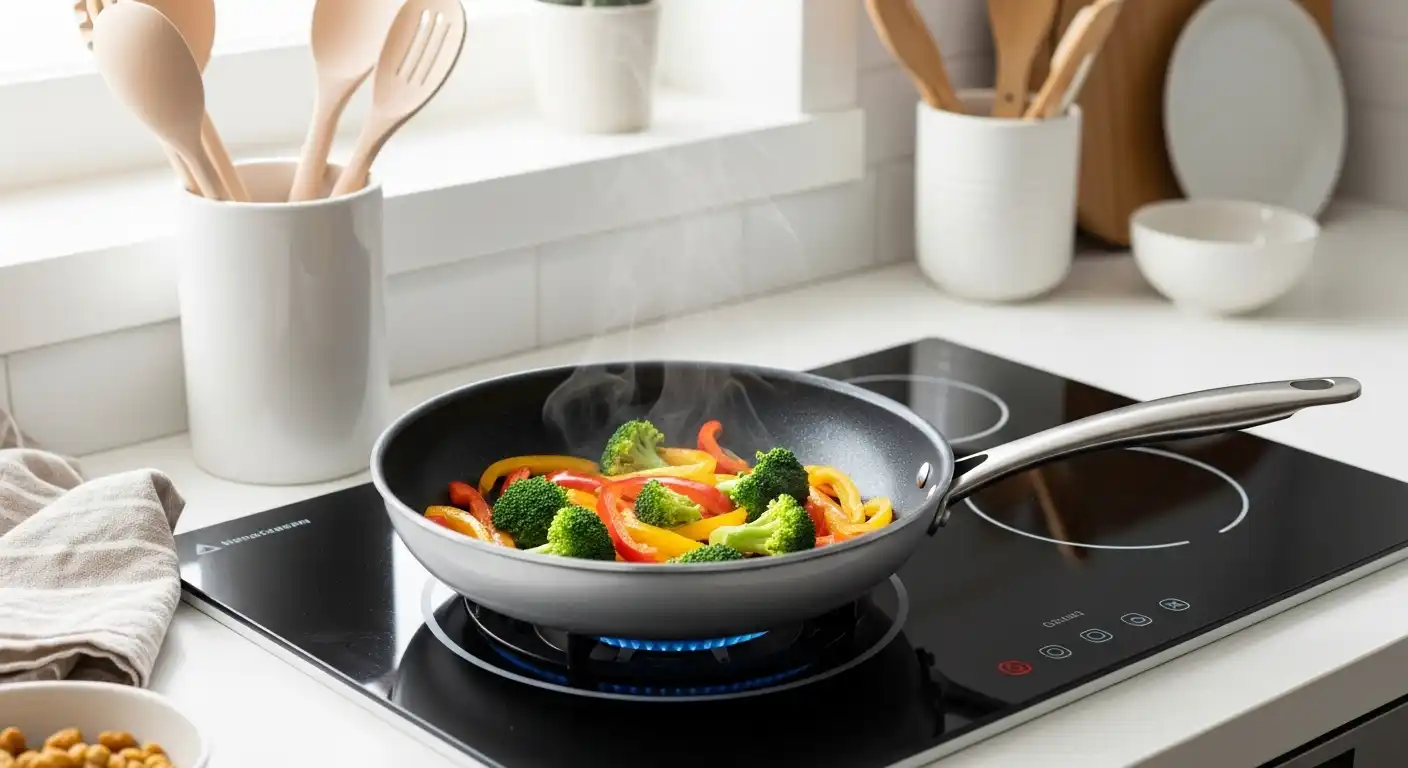
It caters more to Western-style stovetops and is easier to handle for beginners.
Key Features of a Stir Fry Pan:
- Shallow sides that allow easy access to food.
- Flat bottom, making full contact with electric or induction stovetops.
- Typically made of stainless steel, non-stick coatings, or anodized aluminum.
- Great for stir-frying, sautéing, and general pan-frying.
For those comparing their options, you might also find our post on skillet vs frying pan helpful.
Wok Vs Stir Fry Pan: Comparing the Essentials

Cooking Performance
The wok’s shape encourages food to cook quickly and evenly over intense heat.
Its deep sides prevent spills and allow you to push cooked ingredients up the sides to avoid overcooking.
The stir fry pan, while excellent for sautéing and lighter stir-fries, doesn’t retain heat as dramatically.
It offers a gentler cooking environment, perfect for those hesitant about cooking over high heat.
If you’re still unsure about heat distribution, explore why some chefs believe a wok is better than a frying pan for certain recipes.
Ease of Use
Beginners often find stir fry pans easier to manage because of their stability on flat stovetops. You don’t need to learn the tossing technique that woks require.
However, once mastered, a wok opens up a world of culinary possibilities—deep frying, steaming, smoking, and even making popcorn (yes, you can learn how to make popcorn in a wok!).
Stove Compatibility
Stir fry pans naturally suit flat cooking surfaces like electric and induction stoves.
🎄 Christmas & Year-End Amazon Deals !
Don’t miss out on the best discounts and top-rated products available right now!
*As an Amazon Associate, I earn from qualifying purchases.
Woks, especially round-bottomed ones, often need accessories like a wok ring.
If you’re cooking on electric or glass stoves, here’s how to use a flat-bottom wok on an electric stove or discover whether your wok will work on an induction cooktop.
Versatility in the Kitchen
Wok Versatility
A wok shines with more than just stir-fry. You can steam dumplings, boil noodles, or even cook rice in a wok.
Its deep design allows for methods like deep frying without splashing oil everywhere (can a wok be used for deep frying?).
Stir Fry Pan Versatility
The stir fry pan, on the other hand, is more of a one-trick pony.
It’s fantastic for sautéing veggies, browning proteins, and crafting lighter stir-fries.
But for steaming or deep frying, you’ll need to reach for another pan.
Maintenance and Longevity
Cleaning and Seasoning
A carbon steel wok develops a natural non-stick patina over time, which enhances its cooking performance.
Seasoning and maintaining a wok is crucial, and learning how to clean a wok properly ensures it lasts for years.
Stir fry pans, particularly those with non-stick coatings, require gentler care. Avoid metal utensils and stick to low or medium heat to preserve the coating.
If you’re considering a Lodge cast iron wok, remember that cast iron also requires seasoning and careful cleaning routines.
Which Should You Choose: Wok Vs Stir Fry Pan?
Choose a Wok If:
- You love Asian-style cooking and high-heat techniques.
- You’re willing to learn how to season and care for your cookware.
- You want a versatile pan for steaming, frying, and even baking.
Choose a Stir Fry Pan If:
- You prefer ease of use and less maintenance.
- You mainly cook on a flat electric or induction stovetop.
- You’re looking for a tool primarily for sautéing and light stir-fries.
Still on the fence? Read about wok vs frying pan comparisons to weigh your options further.
🎄 Christmas & Year-End Amazon Deals !
Don’t miss out on the best discounts and top-rated products available right now!
*As an Amazon Associate, I earn from qualifying purchases.
Can You Substitute One for the Other?
In a pinch, yes, but with some trade-offs.
A wok’s deep sides and high heat tolerance can manage what a stir fry pan does—and much more.
But using a stir fry pan where a wok is called for (like deep frying) might leave you struggling.
If your curiosity is piqued, explore whether you can use a wok as a frying pan.
Practical Tips for Choosing Your Cookware
- Consider Your Stove Type: Glass-top or induction stove owners will want to explore how to use a wok on a glass top stove for best results.
- Think About What You Cook Most Often: Stir-frying veggies nightly? A stir fry pan works. Love deep-fried spring rolls? Go with a wok.
- Maintenance: Don’t overlook upkeep. A carbon steel wok requires seasoning, while non-stick stir fry pans are easier but have a shorter lifespan.
Final Thoughts: Wok Vs Stir Fry Pan for Your Kitchen
At the end of the day, the Wok vs Stir Fry Pan debate comes down to cooking style and personal preference.
If you’re passionate about mastering stir-fry dishes, a wok is your best ally. But for casual cooks wanting simplicity and convenience, a stir fry pan fits the bill.
Why not have both? Many home cooks keep a wok for authentic Asian dishes and a stir fry pan for everyday sautéing.
Looking to expand your cookware knowledge? Check out our comparison of wok vs cast iron skillet or see how a wok compares to a Dutch oven for even more versatility.


